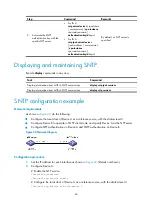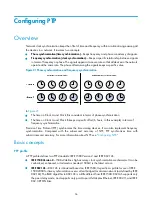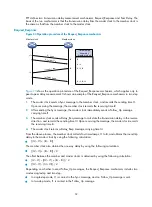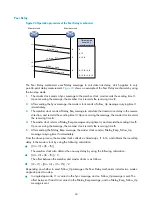
49
# Specify the local clock as the reference source, with the stratum level 2.
[CE1] ntp-service refclock-master 2
3.
Configure PE 2:
# Enable the NTP service.
<PE2> system-view
[PE2] ntp-service enable
# Specify CE 1 in VPN 1 as the NTP server of PE 2.
[PE2] ntp-service unicast-server 10.1.1.1 vpn-instance vpn1
4.
Verify the configuration:
# Display the IPv4 NTP association information and status on PE 2 a certain period of time later.
[PE2] display ntp-service status
Clock status: synchronized
Clock stratum: 3
System peer: 10.1.1.1
Local mode: client
Reference clock ID: 10.1.1.1
Leap indicator: 00
Clock jitter: 0.005096 s
Stability: 0.000 pps
Clock precision: 2^-10
Root delay: 0.00655 ms
Root dispersion: 1.15869 ms
Reference time: d0c62687.ab1bba7d Wed, Dec 29 2010 21:28:39.668
[PE2] display ntp-service sessions
source reference stra reach poll now offset delay disper
********************************************************************************
[1245]10.1.1.1 127.127.1.0 2 1 64 519 -0.0 0.0065 0.0
Notes: 1 source(master),2 source(peer),3 selected,4 candidate,5 configured.
Total sessions : 1
[PE2] display ntp-service trace
Server 127.0.0.1
Stratum 3 , jitter 0.000, synch distance 796.50.
Server 10.1.1.1
Stratum 2 , jitter 939.00, synch distance 0.0000.
RefID 127.127.1.0
The output shows that PE 2 has been synchronized to CE 1, with the stratum level 3.
Configuration example for MPLS VPN time
synchronization in symmetric active/passive mode
Network requirements
As shown in
, two VPNs are present on PE 1 and PE 2: VPN 1 and VPN 2. CE 1 and CE 3
belong to VPN 1.
To synchronize the time between PE 1 and CE 1 in VPN 1, do the following:
Summary of Contents for 5920
Page 86: ...76 XGE1 0 2 N A P2P Two 0 ...
















































